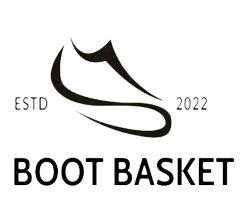Content

Many of these tasks involve cutting and pasting from one system to another, and extracting data from multiple systems to pre-populate forms, sending form response letters. Exceptions include work that the BPM/workflow/transaction back office accounting processing systems reject due to an abnormality – perhaps a missing piece of data, a variable that doesn’t match the parameters, etc. These historically have been paper-intensive, people-intensive support functions.
Because there is no direct contact with the customers, less income is generated from the back office. The smooth running of the back office contributes to the success of a business. The employees work behind the scenes to manage critical business processes so that the front office can attract new clients, creating new revenue streams for the business. Being the growing world of IT and the increased costs for hiring a full-time developer, business owners are always looking for avenues to increase productivity while reducing overhead. Yes, they’re pros and cons, but a new form of outsourcing is becoming increasing popular. To learn more about nearshore outsourcing and its importance, consider clicking here.
Marketing and public relations
On the other hand, multiple enterprises have opted for the contract out and offshore back-office positions to cut expenses eventually. In addition, technology has provided modern firms with the ability https://www.bookstime.com/ to authorize work from home. What is more, distantly hiring back-office specialists enables enterprises to find talents in different business domains and engage a wide range of job seekers.
- Malcolm’s other interests include collecting vinyl records, minor
league baseball, and cycling. - “Outsourcing means that we can scale the team up and down when need be.” Scaling workforce through outsourcing is yet again, among the trends that will remain prevalent.
- Both play important roles in growing the organization and making sure all the organization’s operations are running seamlessly.
- The back office is also responsible for trade clearances, record maintenance, accounting, and IT services.
- This makes it difficult to roll up reporting, share resources, and get a true picture of the end-to-end process.
Meanwhile, knowledge process outsourcing enables companies to outsource knowledge-related work including research and development, innovation, and creatives. Legal process outsourcing deals more with delegating legal processes and compliances to legal firms in another area. The type of business process outsourcing can be characterised by their specialisation, location, and size. The recent Clutch survey stated that around 90% of small businesses plan to outsource their services in 2022 due to the efficiency and flexibility that companies get. They can establish their global presence and expand more easily to other locations since they already have operations in the area.
Techopedia Explains Back Office Application
Back-office operations involve payroll and the administration of employee benefits. They’re also involved in the clearing and settling of trades as well as issuing new securities via initial public offerings (IPOs). Yet, the back office roles go hand in hand with client and customer-facing roles, back office-related tasks usually involve supporting the front office.
Both are those places where the employees perform clerical jobs or professional activities and other activities related to the smooth running of the business. My Accounting Course is a world-class educational resource developed by experts to simplify accounting, finance, & investment analysis topics, so students and professionals can learn and propel their careers. Payroll ‘s main duty is to secure that all employees receive their compensation properly. They also make sure that salaries are on time, and if there are disputes, hence they should be able to address them. Data entry clerks ensure that the organization’s computer database is accurate, organized, and up-to-date.
How your Company can Benefit from Back Office Support
They are responsible for various tasks in the office such as data entry, balance sheet generation, accounting, and keeping financial records up to date. Although back office functions are often considered to be less strategic than front office roles, they are nevertheless essential for every business, large or small. The majority of back office tasks are performed by administrative staff and are therefore considered as routine work. Most back office BPO companies offer flexible business models that can be customized to suit your business needs. You can either choose traditional fully-managed outsourcing workstations or remote teams to cut costs.
What does back office do?
What Is Back Office? The back office is the portion of a company made up of administration and support personnel who are not client-facing. Back-office functions include settlements, clearances, record maintenance, regulatory compliance, accounting, and IT services.
Outsourcing poses more growth opportunities for businesses of all shapes and sizes. While there is still drawbacks to this practice, it is safe to say that its advantages outweigh its risks. In some instances, they are also allowed to incorporate their culture and values to their team and absorb them as a part of their company. They can build a team and hierarchy; they do well-prepared implementation and alignment; and are also aligned to their high-quality mission, objectives, and culture. Based on their review of these investments, they support the company by providing suggestions to corporations to assist reduce future risks. Risk analysts must be skilled in analytical, strategic, and interpersonal abilities.



